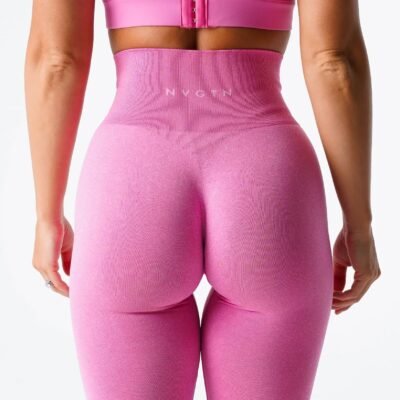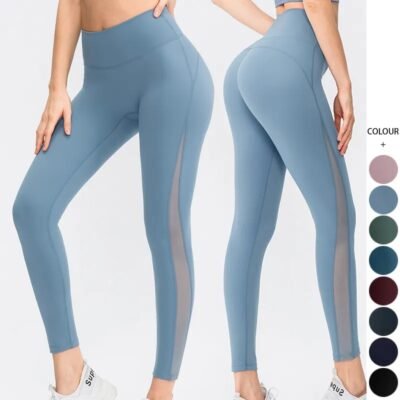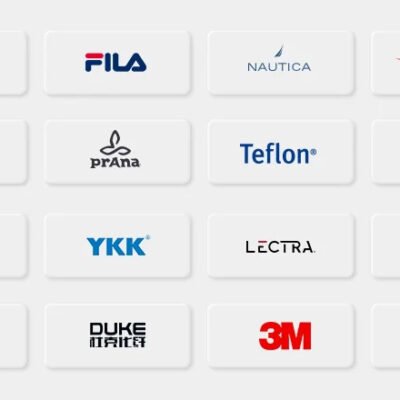The global demand for yoga wear has been on a steady rise, driven by the increasing popularity of yoga and wellness activities. For businesses looking to capitalize on this trend, sourcing high-quality yoga wear at competitive prices is crucial. China, as one of the world’s largest manufacturing hubs, offers an extensive range of yoga wear options that can meet various business needs. However, successfully wholesaling yoga wear from China requires careful planning, understanding of the market, and navigating the complexities of international trade. This guide will walk you through the essential steps to wholesale yoga wear from China for your business.
1. Understanding the Market and Setting Your Goals
Before diving into the wholesale process, it’s important to have a clear understanding of the yoga wear market and establish your business goals. Ask yourself the following questions:
- Who is your target audience? Are you catering to beginners, advanced practitioners, or a specific demographic like women, men, or children?
- What type of yoga wear are you focusing on? Are you looking for basic yoga pants, leggings, sports bras, or more specialized items like eco-friendly or high-performance gear?
- What is your budget? Consider how much capital you can invest in inventory, shipping, and other related costs.
Having clear goals will help you make informed decisions throughout the wholesaling process and choose the right suppliers that align with your business objectives.
2. Researching and Identifying Reliable Suppliers
China is home to a vast number of manufacturers and suppliers, but not all of them will meet your quality standards or business requirements. It’s essential to conduct thorough research to identify reliable suppliers. Here are some steps to take:
- Use Online Platforms: Websites like Alibaba, Global Sources, and Made-in-China are popular platforms where you can find a wide range of suppliers. These platforms allow you to filter suppliers based on product type, minimum order quantity (MOQ), and other criteria. Look for suppliers with high ratings, good customer reviews, and a long history of transactions.
- Attend Trade Shows: If possible, attend trade shows in China or other parts of the world where Chinese suppliers showcase their products. Events like the Canton Fair or the Hong Kong Fashion Week are excellent opportunities to meet suppliers in person, see their products firsthand, and establish relationships.
- Request Samples: Once you’ve shortlisted potential suppliers, request samples of the yoga wear you’re interested in. This will allow you to assess the quality, material, and workmanship of their products before committing to a large order.
- Verify the Supplier: Before entering into a business relationship, verify the legitimacy of the supplier. You can use third-party inspection companies to conduct factory audits, check certifications, and ensure the supplier meets industry standards.
3. Negotiating Prices and Terms
Negotiating with suppliers is a critical aspect of wholesaling yoga wear from China. Here are some tips to help you secure the best deals:
- Understand the Market Prices: Before negotiating, do your research on the average market prices for the yoga wear you’re interested in. This will give you a benchmark to work with and prevent you from overpaying.
- Be Clear About Your Requirements: Clearly communicate your order quantity, quality expectations, and any specific requirements you may have, such as packaging or labeling. The more precise you are, the better the supplier can meet your needs.
- Negotiate for Better Terms: Don’t just focus on price; consider other terms like payment options, shipping costs, and delivery times. For example, you could negotiate for better payment terms, such as paying a lower deposit or extending the payment period.
- Build a Long-Term Relationship: Suppliers may be more willing to offer favorable terms if they see the potential for long-term business. Establishing a good rapport with your supplier can lead to better deals and smoother transactions in the future.
4. Understanding MOQ and Production Lead Times
Minimum Order Quantity (MOQ) is a common term in wholesaling, and it refers to the smallest amount of product a supplier is willing to produce or sell at one time. Understanding MOQ is crucial because it directly impacts your investment and inventory management.
- Balancing MOQ with Budget: Some suppliers may have high MOQs, which can be challenging for small businesses or startups. Negotiate with suppliers to lower the MOQ if possible, or consider partnering with other businesses to place a combined order.
- Production Lead Times: Lead time refers to the time it takes for a supplier to produce and deliver your order. This can vary depending on the complexity of the product, the supplier’s capacity, and the season. Make sure to factor in lead times when planning your inventory, especially if you have seasonal demand or specific launch dates.
5. Managing Quality Control
Ensuring the quality of your yoga wear is paramount to maintaining your brand’s reputation and customer satisfaction. Here are some steps to manage quality control:
- Establish Clear Quality Standards: Before production begins, clearly outline your quality standards with the supplier. This should include details about materials, stitching, fit, and any specific features like moisture-wicking or compression properties.
- Use Third-Party Inspections: Consider hiring a third-party inspection company to conduct pre-shipment inspections. These inspections help ensure that the products meet your quality standards before they leave the factory.
- Conduct Random Checks: Even after establishing trust with a supplier, it’s a good practice to randomly check the quality of your products from time to time to ensure consistency.
6. Navigating Shipping and Logistics
Shipping is a critical component of the wholesaling process, and it’s important to understand the logistics involved to avoid delays and additional costs.
- Choose the Right Shipping Method: The choice between air freight and sea freight depends on your budget, the size of your order, and the urgency of the shipment. Air freight is faster but more expensive, while sea freight is cost-effective for large orders but takes longer.
- Understand Incoterms: Incoterms (International Commercial Terms) define the responsibilities of buyers and sellers in international transactions, particularly regarding shipping, insurance, and customs duties. Common terms include FOB (Free On Board), CIF (Cost, Insurance, and Freight), and DDP (Delivered Duty Paid). Make sure you understand these terms to avoid unexpected costs.
- Plan for Customs and Duties: When importing goods from China, you’ll need to navigate customs clearance and pay any applicable duties or taxes. Work with a reliable freight forwarder or customs broker to ensure smooth processing.
7. Building and Maintaining Supplier Relationships
Building strong relationships with your suppliers is key to long-term success in wholesaling. Here’s how to foster good supplier relationships:
- Communicate Regularly: Keep an open line of communication with your supplier. Regular updates and feedback help maintain transparency and trust.
- Be Reliable: Just as you expect reliability from your supplier, ensure that you fulfill your commitments, such as making payments on time and providing clear instructions.
- Visit the Supplier: If possible, visit your supplier in China. Meeting face-to-face helps build rapport and gives you a better understanding of their operations.
- Resolve Issues Amicably: If any issues arise, address them promptly and professionally. Maintaining a positive relationship with your supplier can lead to better cooperation and problem-solving.
8. Conclusion
Wholesaling yoga wear from China offers a lucrative opportunity to source high-quality products at competitive prices. However, it requires careful planning, thorough research, and effective management of suppliers, logistics, and quality control. By understanding the market, negotiating wisely, and building strong supplier relationships, you can successfully wholesale yoga wear from China and grow your business.
Remember, the key to success lies in striking the right balance between cost, quality, and reliability. With the right approach, you can offer your customers top-notch yoga wear that meets their needs and enhances your brand’s reputation.








